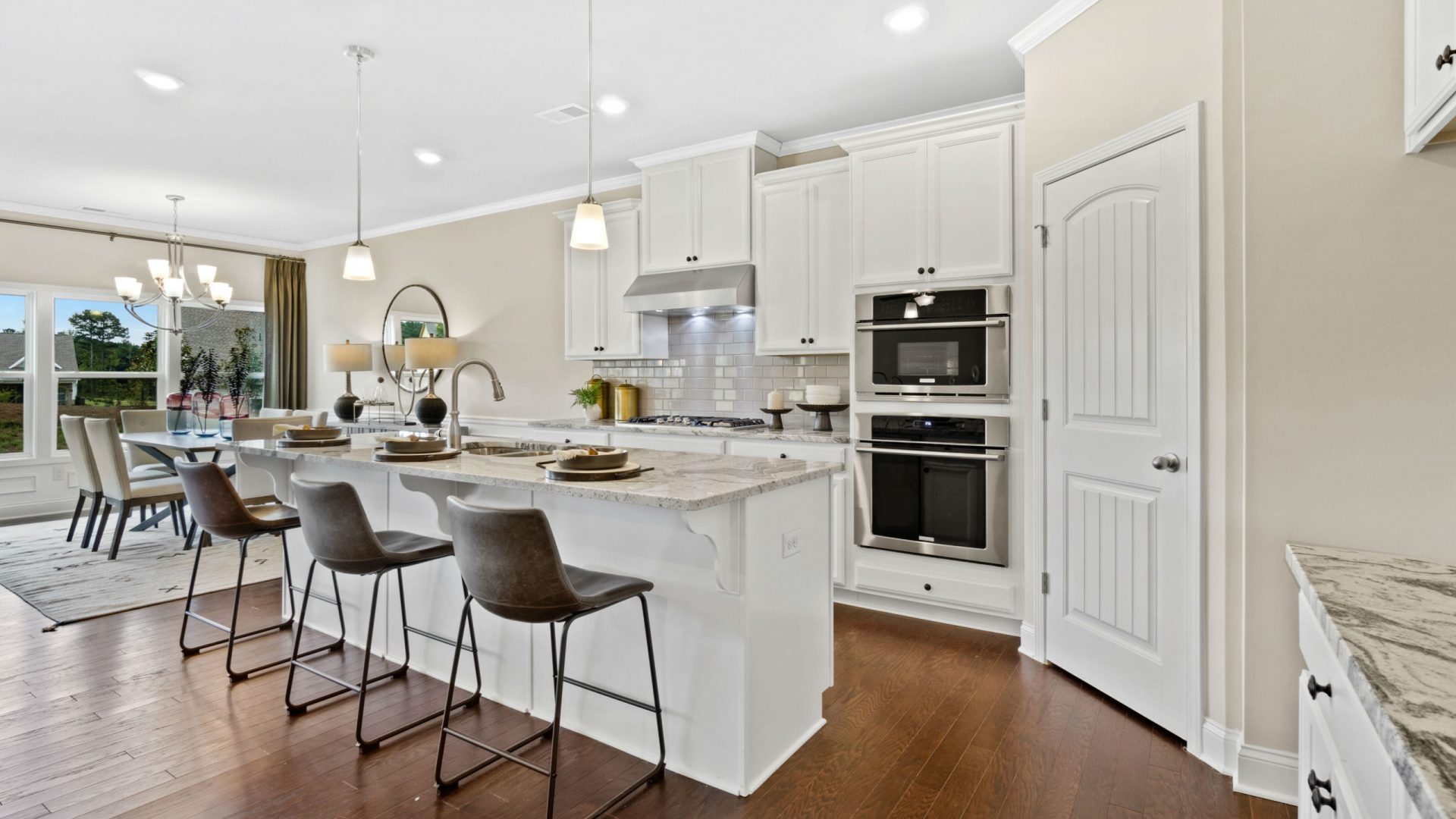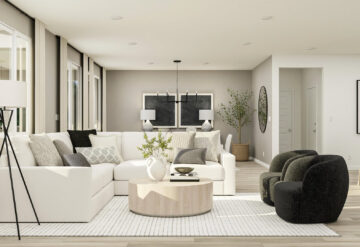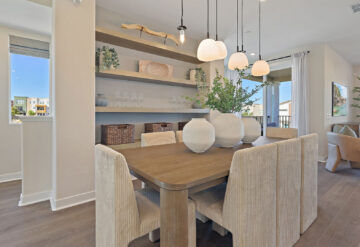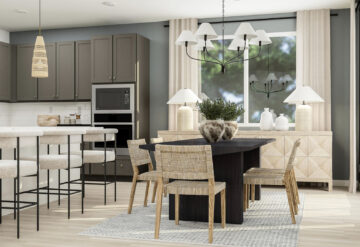Interior design and decorating come naturally to some. These creative unicorns can walk into a space, and moments later, walk out with a vision. They intuitively know how to layout a room, pair colors, and mix patterns. The rest of us need a bit more guidance.
If interior design doesn’t come naturally to you, use this how-to-guide of best practices to get you started on your next decor project.
Function:
One thing many people lose sight of when planning their space or decorating their home is the most apparent design principle – function. Sometimes we get so wrapped up in trying to create a space that mirrors our favorite design magazines and Pinterest images that we forget that our home’s design needs to work for how WE live. Sofas should be welcoming and cozy, dining chairs and stools should be comfortable, and countertops and backsplashes should be easy to clean. No matter what your vision is for your home, be sure it works with how you and your family live.
Vision:
Which brings us to our next point – vision, the second most important step in space planning. Look at your space and try to visualize what will go where. Draw it out, create a vision board or a Pinterest board for each room, gather samples and color swatches, and have a plan before you begin. Creating a plan for the color scheme, layout, look, feel, and design category such as contemporary, modern, bohemian, or industrial from the beginning will help create a cohesive look and feel.
Details:
The details matter in interior design and space planning. While sometimes it’s hard to detect what makes a space so appealing, texture, layers, and color patterns are often the undetectable elements that take a room to the next level. It’s the little details that help give a space interesting depth and bring it to life. When it comes to layering elements such as fabrics, professionals utilize color, scale, shape, and texture. The idea is to make it exciting and cohesive while still adding contrast. Experts suggest using three patterns in a room with colors of the same intensity. The colors can be different shades of the same, or complementary. It’s the intensity that’s key. When it comes to the scale of the patterns, we recommend varying. Try to find and match patterns from the large, medium, and small scale. Too many patterns from the same size category will look busy and cluttered.
Balance:
Some places and items require symmetry, and others do not. Some pieces look best when the “rule of thirds” is applied, and others do not. Balance is specific to each space’s architectural features. Professionals advise that you survey and observe the area from different angles to get a feel for what will work and where. Utilizing sketches, apps, and online interior design programs can help. We also recommend considering feng shui when designing a space. These basic design principles not only help with the flow of energy, but they help with the aesthetic as well. When it comes to designing a feng shui bedroom, for instance, it’s fundamental that the foot of the bed isn’t facing the door, and the head of the bed isn’t under a window. These two rules will create a clear option for the position of your bed – a great place to start in space planning a bedroom.
Color:
Choosing a color for a room can be incredibly overwhelming. There are thousands of options for shade – then you need to consider the sheen – matte, glossy, semi-gloss, eggshell, oh my. To begin, we suggest finding a patterned piece of furniture or rug that you love and pulling colors from there. If you’re starting from scratch, utilize the color wheel. Colors next to each other on the color wheel, such as green and yellow, are more casual, while colors that sit opposite each other on the color wheel, such as blue and orange, are complimentary. When using complementary colors in the home, be sure to make them pop. Pops of color come from smaller items like lampshades or pillows rather than full painted walls and large furniture. Balance out these more vibrant color pairings with neutrals.
Decorating a new home can feel overwhelming – just remember to take it slow and focus on one room at a time. Creating a cohesive, flowing, and aesthetically appealing home won’t happen overnight. Have fun with it, curate items you love, and you’ll end up with a home you can be proud.




